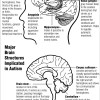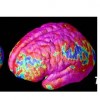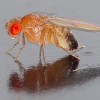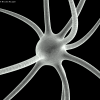Schizophrenia and Autism – Opposite Ends of the Same Spectrum?
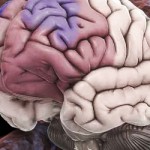 Bernard Crespi, an evolutionary geneticist at the Simon Fraser University in Burnaby, Canada, has proposed that schizophrenia and autism are the opposite ends of the same social spectrum. Speaking at the Sackler Colloquium on Evolution in Health and Medicine at the National Academy of Sciences, Crespi noted that copy number variations (CNVs) in the human genome are similar for both schizophrenia and autism. What are CNVs and what evidence is their to support Crespi’s hypothesis?
Bernard Crespi, an evolutionary geneticist at the Simon Fraser University in Burnaby, Canada, has proposed that schizophrenia and autism are the opposite ends of the same social spectrum. Speaking at the Sackler Colloquium on Evolution in Health and Medicine at the National Academy of Sciences, Crespi noted that copy number variations (CNVs) in the human genome are similar for both schizophrenia and autism. What are CNVs and what evidence is their to support Crespi’s hypothesis?
What are CNVs?
Copy number variations are spontaneous mutations in the genome that result in duplications or deletions of the genomic sequence. Duplications can produce extra copies of a gene, deletions can remove it altogether. CNVs are an interesting biological phenomenon because they are not inherited from ones parents. Rather, they are acquired de novo when certain sequences of genetic code fail to copy properly. Acquisition of CNVs is unpredicted, random, and spontaneous. Smaller variants are probably very common—each one of us may have one or two.
A raft of studies over the last five-years has propelled CNVs to the forefront of mental health research. CNVs have been linked with a number of disorders including Alzheimer’s (e.g. Rovelet-Lecrux, 2006), autism (e.g. Sebat et al. 2007), bipolar disorder (e.g. Lachman, 2007), and schizophrenia (e.g. Walsh, 2008). The broad theme of these association studies is that individuals with these disorders have more CNVs than the general population. As such, CNVs may be a major causal factor in cognitive (and other) illness.
What is the evidence?
Currently, there is not a great deal of evidence to support Crespi’s hypothesis. A 2008 Nature review paper by Cook & Schere, highlights two genomic loci particularly associated with both: 15q11 – 15q13 and 22q11. However, these are also associated with other disorders including mental retardation. Similarly, there are many loci associated with schizophrenia and not autism and vice-versa. These findings are not a fatal blow to Crespi’s hypothesis, but do recommend a certain level of skepticism.
Crespi also invokes behavioral (phenotypic) evidence, noting that these disorders have similar symptoms, which manifest in opposite directions. Language, social skills, etc., the hypothesis states, are underdeveloped in autistic-spectrum conditions and overdeveloped on the psychotic spectrum. Again, I am not convinced that there is sufficient evidence to substantiate these claims. Crespi points out that glutamate, the brain’s main neurotransmitter, is deficient in schizophrenia and overactive in autism. However, glutamate is associated with a myriad of disorders. Conversely, many biochemicals are associated with schizophrenia and autism.
Professor Jeffrey Lieberman discusses the glutamate hypothesis of schizophrenia.
To Conclude..
Crespi’s hypothesis is interesting and certainly worthy of further comment. Right now, the evidence is not there to substantiate the hypothesis, but that is not to write it off entirely. As genomic technology becomes more powerful, it is increasingly likely that it will be used to inform how we think about diagnosis and psychiatric disorders. Psychologists are compelled to take note of developments in molecular biology, and the two communities are beginning to merge in places. I suspect we will be seeing many papers of this kind in the next few years.
Read more…
G2C Online, schizophrenia resources:
G2C Online, autism resources:
CSHL Harbor Transcript article on CNVs (written by me!):
A review from Science magazine:
| Print article | This entry was posted by connolly on April 2, 2009 at 11:33 am, and is filed under G2C Online. Follow any responses to this post through RSS 2.0. You can skip to the end and leave a response. Pinging is currently not allowed. |

